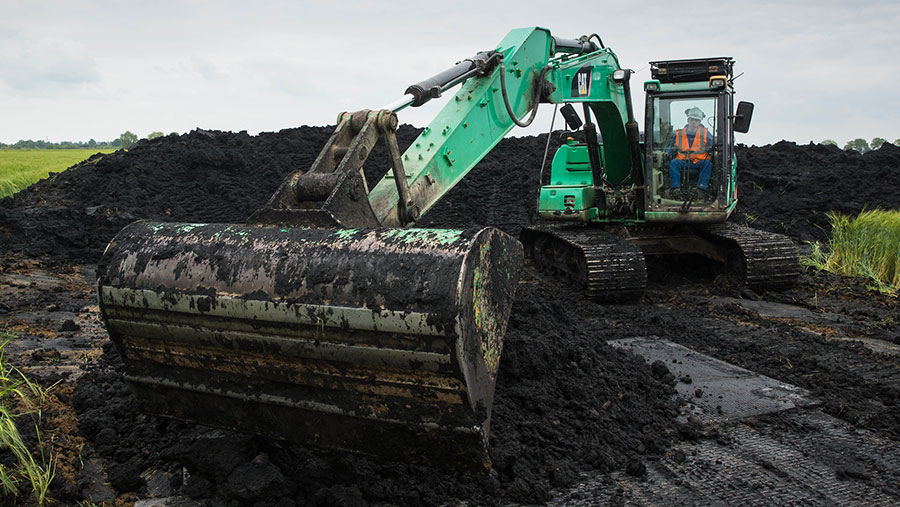What farmers need to do to use sewage sludge safely
 © Tim Scrivener
© Tim Scrivener The UK water industry generates well over 1m tonnes of sewage sludge each year, the bulk of which is treated and recycled on to land as a fertiliser and to improve soil structure.
Although it contains useful organic matter it can also be a source of disease or toxic amounts of micronutrients if used incorrectly.
Farmers who accept sludge – also known as biosolids – on to their farms are required to show they have taken steps to follow the Sludge (Use in Agriculture) Regulations 1989 Great Britain and Northern Ireland 1990.
Failure to comply can result in an unlimited fine on conviction. Additional penalties may be imposed if cross-compliance rules are also found to have been breached, for example if nitrate vulnerable zone rules are broken.
See also: How to get better soils from biosolids
The Sewage sludge in agriculture: Code of practice for England, Wales and Northern Ireland contains the rules in their entirety but Farmers Weekly has put together everything farmers need to know right here.
Separate guidance is in place in Scotland and is available from the Scottish Environment Protection Agency.
In addition to the code of practice there is also a safe sludge matrix which guides farmers through what sort of sludge is allowed for each different crop type.
The matrix is based on a voluntary agreement which was drawn up between the British Retail Consortium and Water UK which represents the water companies.
Farmers are also advised to check the terms of any contracts or farm assurance schemes before deciding to use sewage sludge.
Key points in the code of practice are as follows (based on the version as of May 2018):
Benefits and hazards of sludge
Sewage sludge can supply a large part of the nitrogen and phosphorous that a crop needs.
Details of the typical nutrient content can be found in AHDB’s RB209 guide [PDF]. Sludge is also an effective soil conditioner, as it is a good source of organic matter.
The negatives are it can contain potentially toxic elements (PTEs) which are a risk to human, plant and animal health.
PTEs include elements such as zinc, cadmium, mercury, chromium, selenium and arsenic.
Sludge may also contain virus and disease-causing pathogens including salmonellae, beef tapeworm eggs and potato cysts nematodes.
Soil testing
Farmer are responsible for knowing the levels of any potentially toxic elements (PTEs) in their soil and in any sludge, before allowing it to be spread on their land.
Sludge must not be applied where it would cause soil PTE levels to exceed code maximum levels .
These differ according to the pH of the soil and whether it is arable land or pasture, with higher levels of some PTEs allowed on grassland.
The water company or supplier of the sludge is responsible for testing of PTE levels in the soil, although the farmer must supply information as to what has recently been spread on the soil first.
It is a statutory requirement for soil to be tested before sludge is used for the first time.
These tests must be at least once per 5ha, at least every 20 years since sludge was first used and at a 25cm depth or the depth of the soil (whichever is less).
Operational testing is also advised as part of good agricultural practice.
These tests should be to a 15cm depth on arable land and 7.5cm on grassland.
Sludge cannot be applied to land with a pH less than 5.0 and farmers must seek advice if the representative sample is less than 5.2.
Timing of applications
No sludge may be used on growing fruit or vegetable crops, in glasshouses or in polytunnels.
There must be at least a 10-month gap between any sewage sludge being used and the harvest of any soft fruit, vegetables and potatoes.
However, there are no restrictions on using treated sludge on growing crops of cereals and oilseed rape.
Treated sludge can be used on grassland so long as there is no harvesting or grazing within three weeks of use.
Untreated sludge can be worked or injected into the soil before drilling cereals, grass, sugar beet and oilseed rape without restriction.
Records
Farmers should keep hold of the records supplied to them by the supplier including:
- Sludge test results
- Soil test results
- How much sludge has been used on each field or part-field
Avoiding run-off
Farmers and sludge producers have a responsibility to make sure liquid sludge does not run off into roads, adjacent land, rivers or waterways.
If it rains heavily enough to cause run-off then spreading must stop.
Spreading should not take place on frozen, waterlogged or very dry ground; near water supply sources; or on very dry or clay soils over land drains covered by a permeable film.
Odour control
The best way to reduce any offensive odours is to use treated sludge or it can be injected or worked into the ground as soon as possible.
Always consider the proximity of houses, wind direction and strength.
Sludge stores
Storing sludge on farm can make it easier to plan application, but the design of any sludge storage unit must be secure from the public, avoid causing odour problems and be leakproof to avoid pollution.
